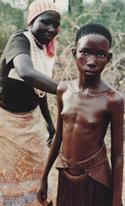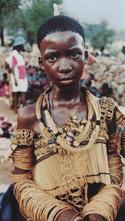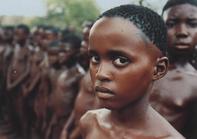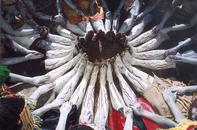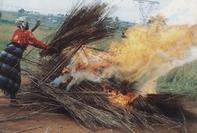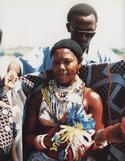
Female Initiates Returning to the Community
Ceremonies of South Africa
In common with initiates in other parts of South Africa, the bodies of Pedi girls are rubbed with fat and ochre at the end of the initiation period, and charcoal and other substances are smeared into their hair.
Because ochre-fat mixtures protect and feed the skin, they are associated with the idea of well-being.
In recognition of their child-bearing potential, Pedi girls are adorned with grass ornaments, associated with fertility, and often receive gifts like sweets on their return to the community.
Because rites of passage are clouded in secrecy, it is usually only at the end of the initiation process that outsiders, including non-initiates and photographers, are allowed to welcome the initiates back into the community.
Before washing off the white clay covering their bodies at the end of the initiation period, initiates sometimes sit in a circle, facing one another. Their grass hoops are crushed and burnt before the ashes are thrown into the river.
Once the clothing of the initiates has been burnt, they return to the community, where they are welcomed with gifts. One of the most important functions of female initiation ceremonies is to underline the need for cooperation and a sense of responsibility to the community.
While most South Sotho female initiates are in their late teens or early twenties, some go through the initiation process when already married. The reunion with family members may be extremely emotional for initiates, who often endure hardship and deprivation during their initiation.
By
Professor Sandra Klopper